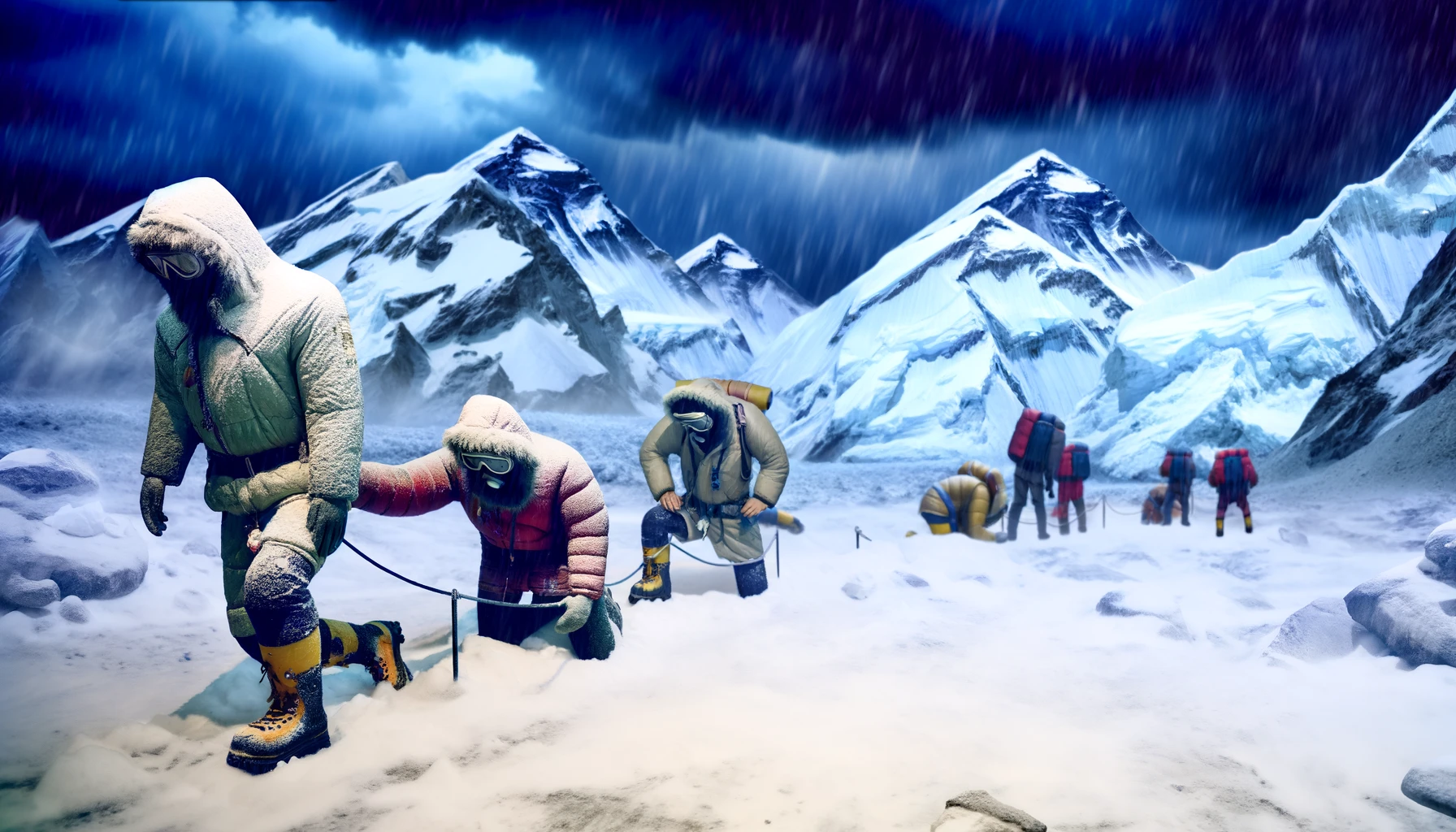In May 1996, Mount Everest witnessed one of its most harrowing tragedies, a disaster that underscored the perilous nature of high-altitude climbing and the unpredictability of the world’s highest peak. This event not only resulted in the loss of eight lives but also sparked a global conversation on the ethics of commercial expeditions, the responsibilities of climbers and guides, and the profound risks associated with summiting the roof of the world. This article delves into the events leading up to and during the disaster, shedding light on the complexities and challenges faced by climbers on Everest.
Prelude to Tragedy
The spring climbing season of 1996 saw an unprecedented number of climbers converging on Everest, drawn by the allure of standing atop the world. Among them were teams led by seasoned veterans: New Zealander Rob Hall’s Adventure Consultants and American Scott Fischer’s Mountain Madness. Both groups were commercial expeditions, guiding clients who had paid substantial sums for the chance to reach the summit.
As the climbing season progressed, several factors contributed to a tense atmosphere on the mountain. These included the inherent risks of altitude sickness, extreme weather, and the physical demands of the climb, compounded by the logistical challenges of supporting large numbers of climbers. Despite these concerns, the teams pressed on, driven by personal ambition and the considerable investments made by their clients.

The Fatal Push for the Summit
The pivotal events unfolded over May 10 and 11, when multiple expeditions, including those led by Hall and Fischer, launched their summit bids. Critical to the unfolding disaster were the delays in reaching the summit. These were caused by bottlenecks at key points along the route, particularly at the Hillary Step, a near-vertical rock face just below the summit. The delays were exacerbated by the decision of some team leaders to extend the typical turnaround time—the latest point at which climbers should abandon their summit attempt and descend to avoid the most dangerous part of the day when weather conditions typically worsen.
As afternoon turned into evening, climbers found themselves still on the summit or making their descent, dangerously exposed to the elements. A sudden and ferocious storm engulfed the mountain, reducing visibility to near-zero and driving temperatures down, further imperiling the already exhausted climbers.
The Aftermath
The immediate aftermath of the disaster was chaotic and grief-stricken. Rescue efforts were launched, but the harsh conditions and altitude made these operations incredibly difficult. Survivors, suffering from frostbite, hypoxia, and the psychological toll of the ordeal, made their way down the mountain, aided by the heroic efforts of fellow climbers and Sherpas.
Among the dead were Rob Hall, Scott Fischer, Beck Weathers, Andy Harris, and Yasuko Namba, whose losses were deeply felt within the climbing community. Their deaths, along with those of clients and experienced Sherpas, raised pointed questions about the ethics of commercial expeditions on Everest. Critics argued that the pressure to succeed, coupled with the commercial interests at stake, had contributed to decisions that amplified the risks to climbers.

Reflection and Change
The 1996 Everest disaster serves as a stark reminder of the dangers of high-altitude climbing, even for the most experienced adventurers. It prompted a reevaluation of safety standards, guide responsibilities, and client preparedness in the industry. While Everest continues to draw climbers, the lessons of 1996 linger in the collective memory of the mountaineering community, a solemn testament to the respect and caution the mountain demands.
In the years following, Everest has seen advancements in weather forecasting, communication technology, and climbing gear, all aimed at improving safety. However, the mountain’s allure remains unchanged, a symbol of human ambition and the eternal challenge of nature’s extremes. The 1996 disaster remains a cautionary tale, a somber chapter in the ongoing story of Everest that continues to influence climbers and expeditions to this day.
